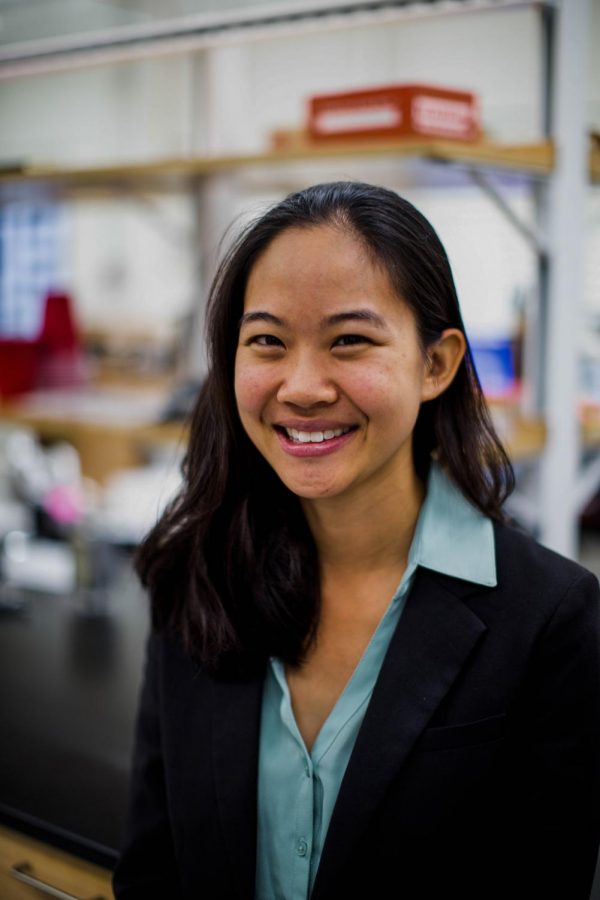University professor awarded coveted Packard Fellowship
Photo Courtesy of Caitlin McCoy
Portrait of Pinshane Huang.
Nov 2, 2017
Dr. Pinshane Huang from the Department of Material Sciences and Engineering is the second woman from the University to win the national Packard Fellowship.
Huang has a Ph.D and M.S. in Applied and Engineering Physics from Cornell University.
The fellowships are awarded by the David and Lucile Packard Foundation, dedicated to helping early-career professors conduct research with little restrictions and reporting requirements.
Huang was one of 18 recipients of the 2017 Packard Fellowship, and she said she was delighted and honored to win the fellowship.
The foundation invites the presidents of 50 universities to nominate two early-career professors in several disciplines, including physics, chemistry, biology, astronomy, computer science, ocean science, animal science and all branches of engineering.
Get The Daily Illini in your inbox!
“As we (the University) have so many great faculty, we have a lot of people competing to get nominated and so just getting out of that campus competition is a big vote of confidence in your work,” Huang said. “It was this amazing thing to be nominated.”
From these 100 applicants, 18 were awarded the fellowship, which is a grant of $875,000 over five years. There has been a total of $394 million given out over the years.
Some recipients of the fellowship have gone on to receive many additional awards and honors, including the Nobel Prize in Physics; the Fields Medal; MacArthur Fellowships; and elections to the National Academy of Sciences and the National Academy of Engineering.
According to the foundation’s website, Packard Fellows “are inquisitive, passionate scientists and engineers who take a creative approach to their research, dare to think big, and follow new ideas wherever they lead.”
Huang’s lab researches nanoelectronics and nanophotonics, which are microscopically small devices.
“We’re making the first steps towards something that is so different from the technologies that we have today that we really have no idea whether it will work or not,” Huang said. “I think that fits into the Packard mold.”
Dr. David Cahill, head of the Department of Material Sciences and Engineering, worked with Huang on her proposal for her nomination from the University and her subsequent application for the fellowship.
He said Huang has exciting plans for advancing the field of microscopy and has creative ideas on how to do it.
“It’s really fantastic for her to have this incredible financial resource to pursue her vision for her field,” he said.
Huang and her team focus on characterizing 2D materials at the atomic level to understand how changing one atom can affect the properties of these materials. The characterization is done by high-end microscopes.
“Just taking that idea and broadening it to many different types of material, that can be electrical insulators, conductors and semiconductors,” she said. “And stack them (layers of atoms) on top of each other to make electronics where every atom had been predetermined.”
Huang said her lab intends to use the fellowship money for training students in the characterization methods and buying new instrument upgrades for microscopes. Additionally, because the microscopes she uses are communal, everyone must pay to use them, so Huang also said some money will be allocated towards that cost.
Currently in her third year here, Huang said she was drawn to the University because of their instruments and faculty. The microscopes her lab uses are millions of dollars.
“Half of our life blood is having great people to work with and the other half is that instrumentation so thats where U of I shines,” she said. “We have wonderful engineering departments here and really excellent scientists in all departments.”






